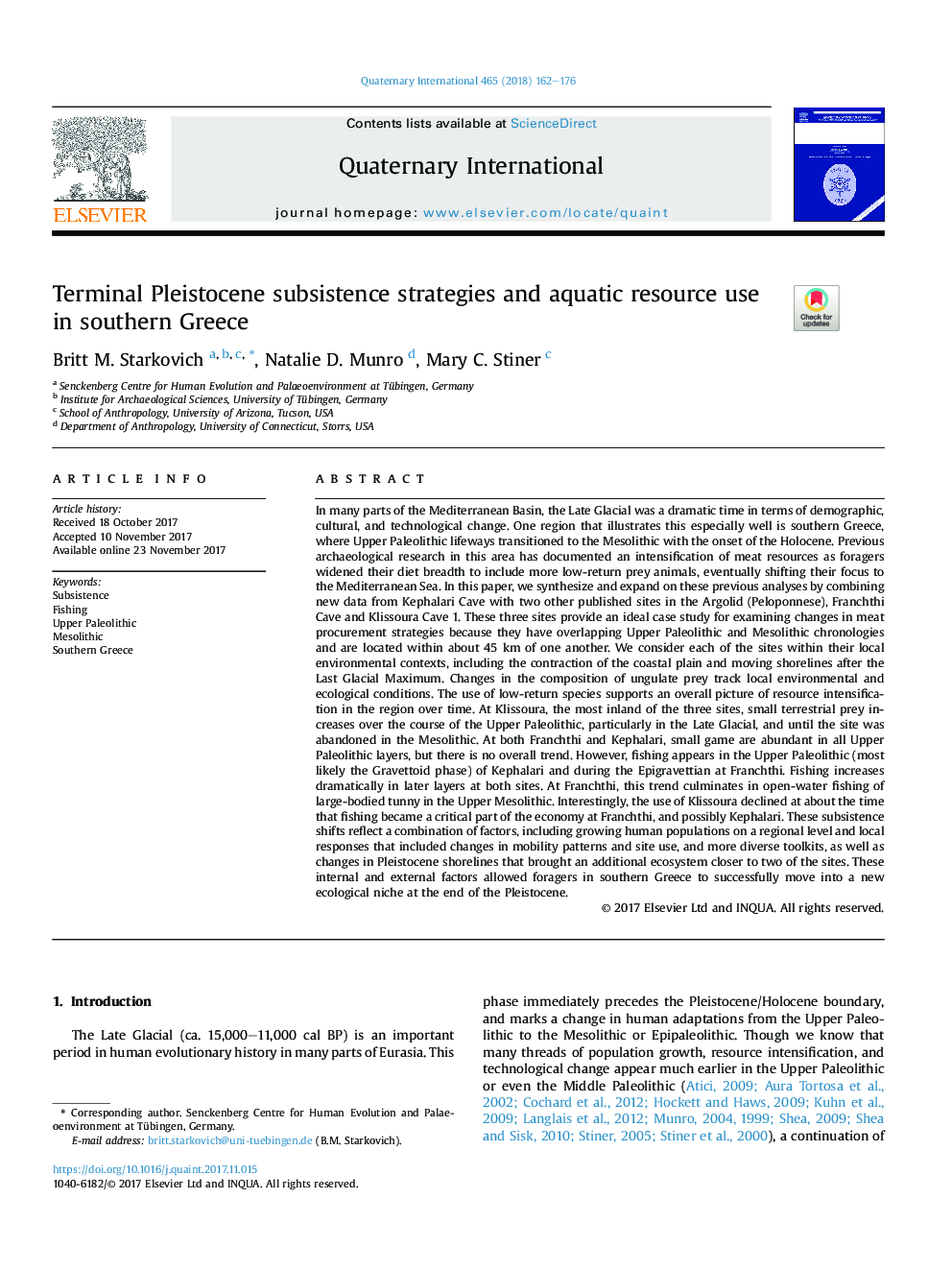| کد مقاله | کد نشریه | سال انتشار | مقاله انگلیسی | نسخه تمام متن |
|---|---|---|---|---|
| 7450735 | 1484055 | 2018 | 15 صفحه PDF | دانلود رایگان |
عنوان انگلیسی مقاله ISI
Terminal Pleistocene subsistence strategies and aquatic resource use in southern Greece
ترجمه فارسی عنوان
استطاعت پایداری پلیستوژن و استفاده از منابع آبزی در جنوب یونان
دانلود مقاله + سفارش ترجمه
دانلود مقاله ISI انگلیسی
رایگان برای ایرانیان
کلمات کلیدی
معاش، صید ماهی، پالئولیت بالا مزولیت، جنوب یونان،
موضوعات مرتبط
مهندسی و علوم پایه
علوم زمین و سیارات
زمین شناسی
چکیده انگلیسی
In many parts of the Mediterranean Basin, the Late Glacial was a dramatic time in terms of demographic, cultural, and technological change. One region that illustrates this especially well is southern Greece, where Upper Paleolithic lifeways transitioned to the Mesolithic with the onset of the Holocene. Previous archaeological research in this area has documented an intensification of meat resources as foragers widened their diet breadth to include more low-return prey animals, eventually shifting their focus to the Mediterranean Sea. In this paper, we synthesize and expand on these previous analyses by combining new data from Kephalari Cave with two other published sites in the Argolid (Peloponnese), Franchthi Cave and Klissoura Cave 1. These three sites provide an ideal case study for examining changes in meat procurement strategies because they have overlapping Upper Paleolithic and Mesolithic chronologies and are located within about 45Â km of one another. We consider each of the sites within their local environmental contexts, including the contraction of the coastal plain and moving shorelines after the Last Glacial Maximum. Changes in the composition of ungulate prey track local environmental and ecological conditions. The use of low-return species supports an overall picture of resource intensification in the region over time. At Klissoura, the most inland of the three sites, small terrestrial prey increases over the course of the Upper Paleolithic, particularly in the Late Glacial, and until the site was abandoned in the Mesolithic. At both Franchthi and Kephalari, small game are abundant in all Upper Paleolithic layers, but there is no overall trend. However, fishing appears in the Upper Paleolithic (most likely the Gravettoid phase) of Kephalari and during the Epigravettian at Franchthi. Fishing increases dramatically in later layers at both sites. At Franchthi, this trend culminates in open-water fishing of large-bodied tunny in the Upper Mesolithic. Interestingly, the use of Klissoura declined at about the time that fishing became a critical part of the economy at Franchthi, and possibly Kephalari. These subsistence shifts reflect a combination of factors, including growing human populations on a regional level and local responses that included changes in mobility patterns and site use, and more diverse toolkits, as well as changes in Pleistocene shorelines that brought an additional ecosystem closer to two of the sites. These internal and external factors allowed foragers in southern Greece to successfully move into a new ecological niche at the end of the Pleistocene.
ناشر
Database: Elsevier - ScienceDirect (ساینس دایرکت)
Journal: Quaternary International - Volume 465, Part B, 26 January 2018, Pages 162-176
Journal: Quaternary International - Volume 465, Part B, 26 January 2018, Pages 162-176
نویسندگان
Britt M. Starkovich, Natalie D. Munro, Mary C. Stiner,
